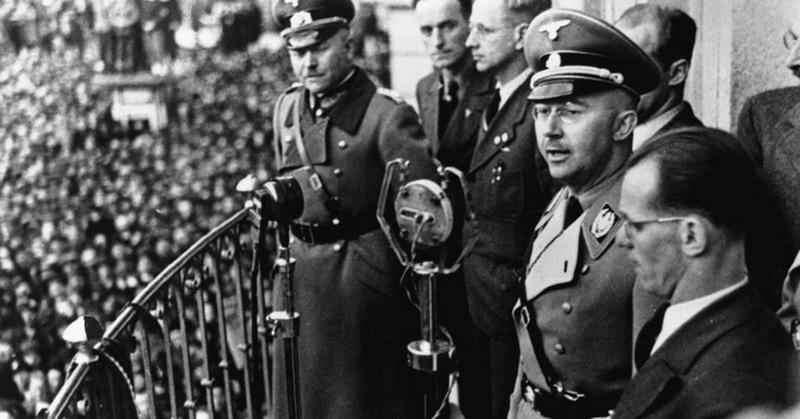Heinrich Himmler, Architect Of The Holocaust
By | May 13, 2022

Heinrich Himmler stands today as one of the great villains of history, most infamous for his meteoric rise to Hitler's right hand and being one of the main architects of the Holocaust. Born October 7, 1900, Himmler had a pretty typical middle-class German upbringing and did well enough in school to attend the Technical University of Munich, where he studied agriculture. After his graduation, however, Himmler found himself unemployed and became quickly enamored with popular conspiracy theories in his area, which laid all blame regarding the economic and cultural struggles faced by post–World War I Germany at the feet of the European Jewish population.
In 1923, Himmler joined the Nazi Party, volunteered to be a part of the Sturmabteilung (S.A.), and participated in the the Beer Hall Putsch, the failed coup d'état that landed Hitler in prison for nine months. Himmler read everything Hitler wrote and became obsessed with his worldview as detailed in his book, Mein Kampf. Though he never made much of himself, Himmler managed to marry rich and used this newfound social mobility to rise through the political ranks, first landing a position as the propaganda chief for the paramilitary group Schutzstaffel, or S.S., then a deputy within the Weimar legislature by 1930.
In 1933, Hitler was elected chancellor of Germany and moved quickly to consolidate his power. Though the S.A. had been steadfast and loyal to Hitler since the days of the Beer Hall Putsch, he viewed them as unnecessary once he had an actual military and their leader, Ernst Rohm, a threat. Dutifully, Himmler forged documents to legitimize a lie that Rohm was about to strike and helped Hitler coordinate a violent purge that took out many of the S.A. higher-ups over the course of three days known as the Night of the Long Knives.

For a while, the Nazi Party seemed unstoppable, and Himmler was there to soak up the power and make any and all of Hitler's wishes come true. Himmler had total control over Germany's spy network and police forces though he had little respect for the actual legal code, once commenting that "the breach of the law is no concern of mine." All he cared about was maintaining and gaining power for the Nazi Party. He focused less on justice and more on the creation of what he viewed as racially superior Germans, insisting that each soldier of the S.S. father at least one child, disregarding social norms like monogamy, and asserting that it was an Aryan woman's duty to procreate on behalf of the state.
By the end of 1941, Hitler believed he had found a solution to the so-called "Jewish question" and ordered the extermination of all "undesirables" living in German and German-occupied land, including Jews, Roma, any other ethnic minority not viewed as racially "pure," homosexuals, disabled people, and religious or political opponents. Seeing as that included millions of people, Hitler handed the dirty work of logistics over to Himmler, who used the opportunity to unleash absolute horrors across Western Europe. The initial idea of "action squads", who came in behind the army in occupied territory and murdered area "undesirables" en masse, was effective but messy and demoralizing to many of the Nazi soldiers.

Himmler attempted first to send vans filled with poisonous gas around to kill people in the area, but it was costly and inefficient, so he ordered concentration camps, specifically Auschwitz, to be equipped with gas chambers. When victims arrived, those who were able bodied were kept alive long enough to be worked (or starved) to death, while the rest were sent to the gas chambers immediately. When Himmler visited Auschwitz, he observed the executions himself through a peephole in the door and gloated over them, once remarking, "It is the curse of great men to step over corpses."
But for all his adoration of Hitler, this supposedly loyal right-hand man turned on him as soon as it was obvious that Germany was going to lose. While Hitler hid in his bunker, Himmler presented himself to many European leaders, including a representative of the World Jewish Congress, to negotiate peace deals. While he meant to cover his own hide in secret, the B.B.C. leaked the story, and a furious Hitler discovered Himmler's actions. He called for Himmler's capture but died before the order could be carried out. Meanwhile, Himmler forged identification papers and disguised himself as a regular German soldier, but he was eventually arrested and identified. On May 25, 1945, during an examination, he bit into a poison capsule he had hidden in his mouth and died.

